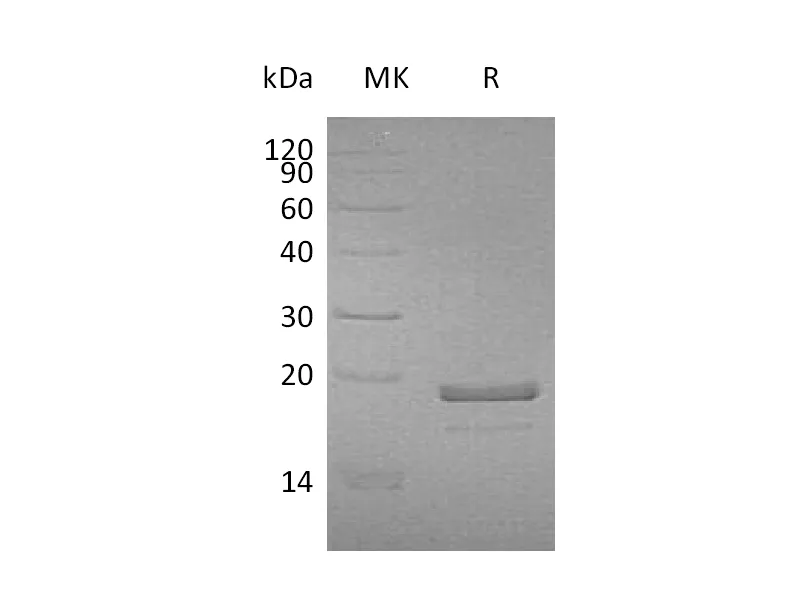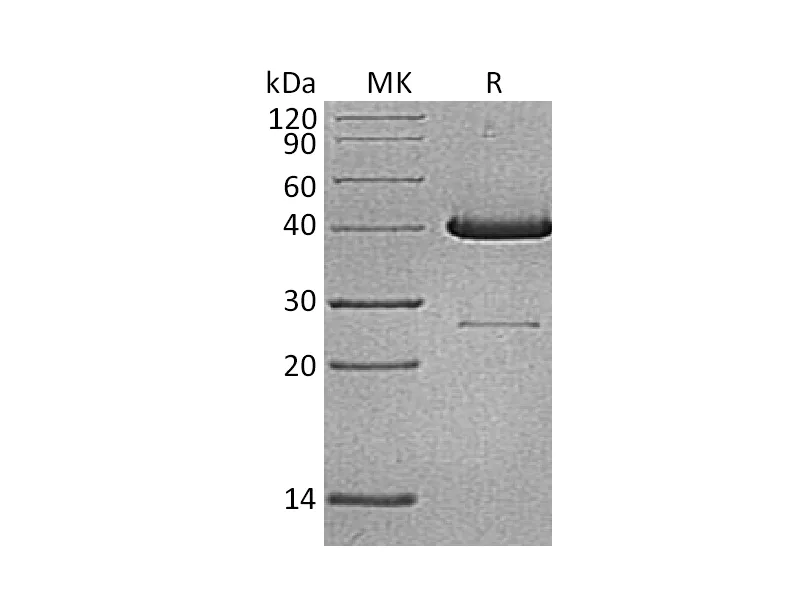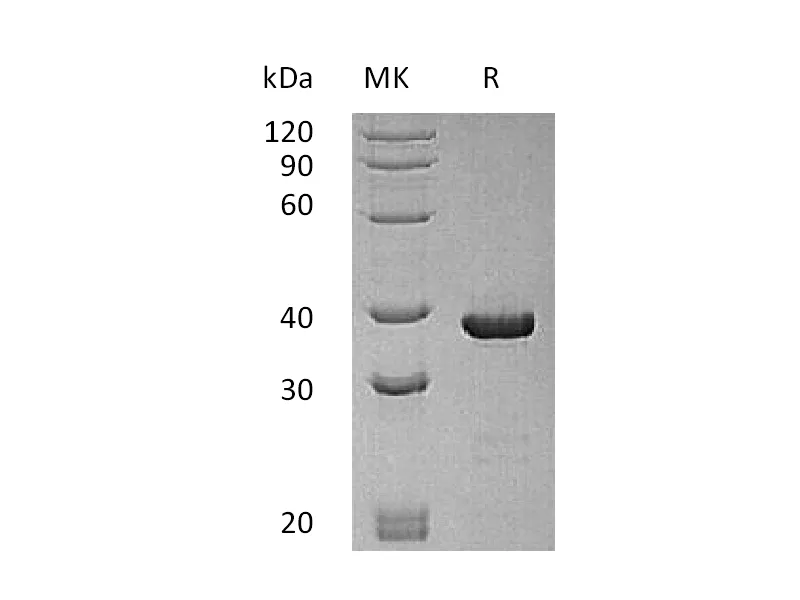| 产品名称 |
Recombinant Schistosoma Japonicum GST |
| 英文名称 |
Glutathione S-transferase Class-mu 26 kDa Isozyme/GST |
| 纯度 |
Greater than 95% as determined by reducing SDS-PAGE |
| 内毒素 |
<1 EU/µg as determined by LAL test. |
| 蛋白构建 |
Recombinant Schistosoma Japonicum Glutathione S-transferase Class-mu 26 kDa Isozyme is produced by our E.coli expression system and the target gene encoding Met1-Lys218 is expressed. |
| Accession |
P08515 |
| 表达宿主 |
E.coli |
| 种属 |
Schistosoma Japonicum |
| 预测分子量 |
25.7 KDa |
| 制剂 |
Lyophilized from a 0.2 μm filtered solution of PBS, pH 7.4. |
| 运输方式 |
The product is shipped at ambient temperature.Upon receipt, store it immediately at the temperature listed below. |
| 稳定性&储存 |
Store at ≤-70°C, stable for 6 months after receipt.Store at ≤-70°C, stable for 3 months under sterile conditions after opening. Please minimize freeze-thaw cycles. |
| 复溶 |
Always centrifuge tubes before opening.Do not mix by vortex or pipetting.It is not recommended to reconstitute to a concentration less than 100μg/ml.Dissolve the lyophilized protein in distilled water.Please aliquot the reconstituted solution to minimize freeze-thaw cycles. |
| 分子别名 |
| Glutathione S-transferase class-mu 26 kDa isozyme; GST 26; Sj26 antigen; SjGST |
| 背景介绍 |
| Glutathione S-transferases (GSTs), previously known as ligandins, comprise a family of eukaryotic and prokaryotic phase II metabolic isozymes best known for their ability to catalyze the conjugation of the reduced form of glutathione (GSH) to xenobiotic substrates for the purpose of detoxification. The GST family consists of three superfamilies: the cytosolic, mitochondrial, and microsomal (MAPEG) proteins. GST isoenzymes appear to play a central role in the parasite detoxification system. Other functions are also suspected including a role in increasing the solubility of haematin in the parasite gut. The activity of GSTs is dependent upon a steady supply of GSH from the synthetic enzymes gamma-glutamylcysteine synthetase and glutathione synthetase, as well as the action of specific transporters to remove conjugates of GSH from the cell. The primary role of GSTs is to detoxify xenobiotics by catalyzing the nucleophilic attack by GSH on electrophilic carbon, sulfur, or nitrogen atoms of said nonpolar xenobiotic substrates, thereby preventing their interaction with crucial cellular proteins and nucleic acids. |
注意事项
本司产品仅用于科研,不用于临床诊断和治疗




